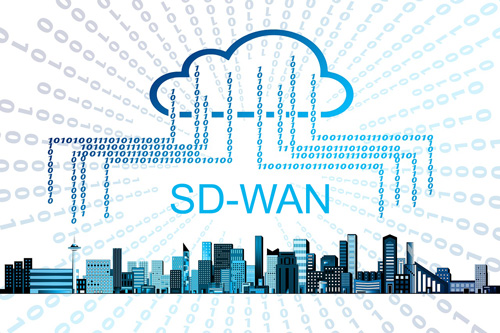Judul : SD-WAN vs MPLS Networks
link : SD-WAN vs MPLS Networks
SD-WAN vs MPLS Networks
Author: Johannes SchipperInformation technology has changed dramatically in recent years, as has the business organization that supports it. The most exciting was the move to cloud computing and everything as a service. However, the last thing that changed was how everything was connected. This is now changing due to cost and cloud architecture.

WAN on separate lines
Before MPLS, there was point-to-point linear communication. Each company had one or more T1 lines and additional DS3 bandwidth and OCx fiber circuits. Connecting two business sites is very easy. Select the line that runs directly between them and use it as another part of your grid.
It becomes difficult and expensive to add line after line to connect remote offices, factories and warehouses. A monthly rental fee is charged for each of these lines based on distance and bandwidth. Each must be integrated into a large or fragmented network to control traffic. Through a WAN (Wide Area Network), you quickly become a virtual telecommunications office.
MPLS performance is good
Two competing technologies were developed to make long-distance data transmission more accessible and affordable. The first is the Internet. It is said to be a public network, almost universal and cheap as a chip. The problem is that performance is unstable and security is lacking.
The other is a less private version of the Internet called MPLS, or Multiprotocol Shortcut Switching Networks. Instead of a giant Internet, you have many smaller networks, each run by an independent commercial operator. It's worth playing. When you're on an MPLS network, you usually don't have access to another network, although there are services that aggregate or aggregate different MPLS networks. You often choose an MPLS network that has nodes close to the sites you want to connect to.
The beauty of MPLS networks is that performance is guaranteed and security is superior to the Internet. In fact, MPLS is sometimes called MPLS VPN because the private protocols are difficult to crack. Your connections are preset, so you can only talk to your locations. Others have no way to access your data, and they don't even know you're sharing a network. All of this comes at a price, but it's much less than having lots of private dedicated lines.
How about this internet?
For those who don't have a budget or need to communicate with anyone in the world, especially the general public, the Internet is really the only viable option available. You can connect with your customers and suppliers anywhere. Core connectivity and bandwidth are optimized, so overall performance is decent if your applications aren't very demanding and don't shy away from some flexibility. Security can also be improved to an acceptable level with VPN technologies such as SSL used in browsers.
SD-WAN, the best of both worlds
What an SD or Software Defined WAN offers is a combination of a private line, a semi-private MPLS network, and concurrent public Internet connections. Each of them has its advantages and disadvantages. Private fonts are strong, limited to one page, and expensive. MPLS networks offer lower costs while maintaining circuit performance and wide communication range. The Internet has cheap bandwidth and is connected almost everywhere.
Can you connect them all together? That's what SD-WAN does. The software-defined part is the intelligence that controls the various lines you connect to. You or your service provider explicitly tell the SD-WAN driver that VoIP phone calls will go over private lines or over an MPLS network, and files will be backed up online. If you lose your private line or MPLS connection, the system can create a VPN tunnel to instantly route all your traffic over the Internet. You can continue your business with at least some performance loss until high performance traces are restored.
SD-WAN can save a lot of money by knowing which traffic is latency sensitive, bandwidth demanding, extremely secure, and which traffic is less important or necessary. It routes packets along the cheapest paths compatible with acceptable performance. WAN optimization software can also be integrated as part of a management system to further improve performance and reduce costs.
Have your business needs changed recently, or do you think you're overspending because your WAN has become fragmented over the years? Now is the time to take a look at the new SD-WAN and other connectivity options available to your businesses.


That's the article SD-WAN vs MPLS Networks
That's it for the article SD-WAN vs MPLS Networks this time, hopefully can be useful for all of you. okay, see you in another article post.
You are now reading the article SD-WAN vs MPLS Networks with link address https://direcway-satelite.blogspot.com/2022/08/sd-wan-vs-mpls-networks.html

0 Response to "SD-WAN vs MPLS Networks"
Posting Komentar